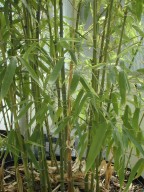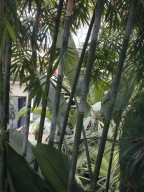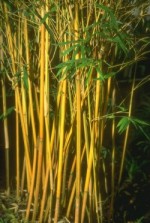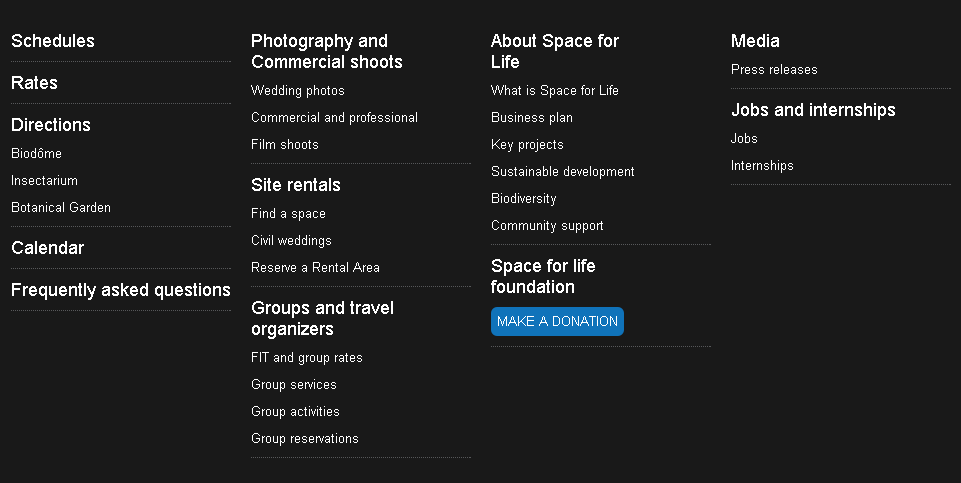

|
|
Growing bamboo
You might want to try growing bamboo in your own garden. The hardiest species will survive in zones 5, 4 and sometimes even 3, with winter protection. At our northern latitudes, bamboo can be grown as a hedge or stand... but it will never spread to become a forest! Water and heatBamboos like plenty of water and well-drained soil. They need summer heat and good garden soil. The ground should be kept well watered and fertilized with a product that promotes foliage growth (fertilizer for foliage plants, for instance, with 20-20-20 or 10-5-5 on the label). You will also need to protect them in winter, with straw, piles of snow or a protective cover. Otherwise, they may lose some of their leaves and stems, and perhaps even their rhizomes. Hardy species include Phyllostachys aureosulcata, Phyllostachys nigra, Phyllostachys nuda, fountain bamboo (Fargesia nitida) and umbrella bamboo (Sinarundinaria murielae). Less hardy species, like golden bamboo (Phyllostachys aurea), are best transplanted every summer (although this will stunt their growth) or grown in containers year-round. Bamboo can be propagated by taking some of the underground shoots from the mother plant, by dividing the stalks (removing a clump containing a few culms and their rhizomes) or by dividing the rhizome (removing a part of the rhizome containing buds). 
Bamboo as a lawnDwarf bamboos make an original ground cover that can be used in place of grass. Some of them are very hardy and require little maintenance. If you want a carpet of greenery, dwarf bamboo (Arundinaria pumila) and pygmy bamboo (Arundinaria pygmaea or Pleioblastus pygmaea) are recommended. Creeping bamboos need to be contained with a 40-cm deep barrier to keep them from spreading, however, because their rhizomes can become very invasive. Indoor plantsThe tropical species make good indoor plants if given plenty of sun. Their clumping rhizomes, which form tight clumps, are easier to grow indoors than are the temperate species, whose running rhizomes will quickly outgrow a pot. Some varieties make good bonsais or penjings. Suppliers
CanadaHortico inc. The Plant Farm United StatesA web site with links to several American suppliers : http://www.newengbamboo.com | The Architecture | The Elements | The Activities | The Society of the Chinese Garden | |


